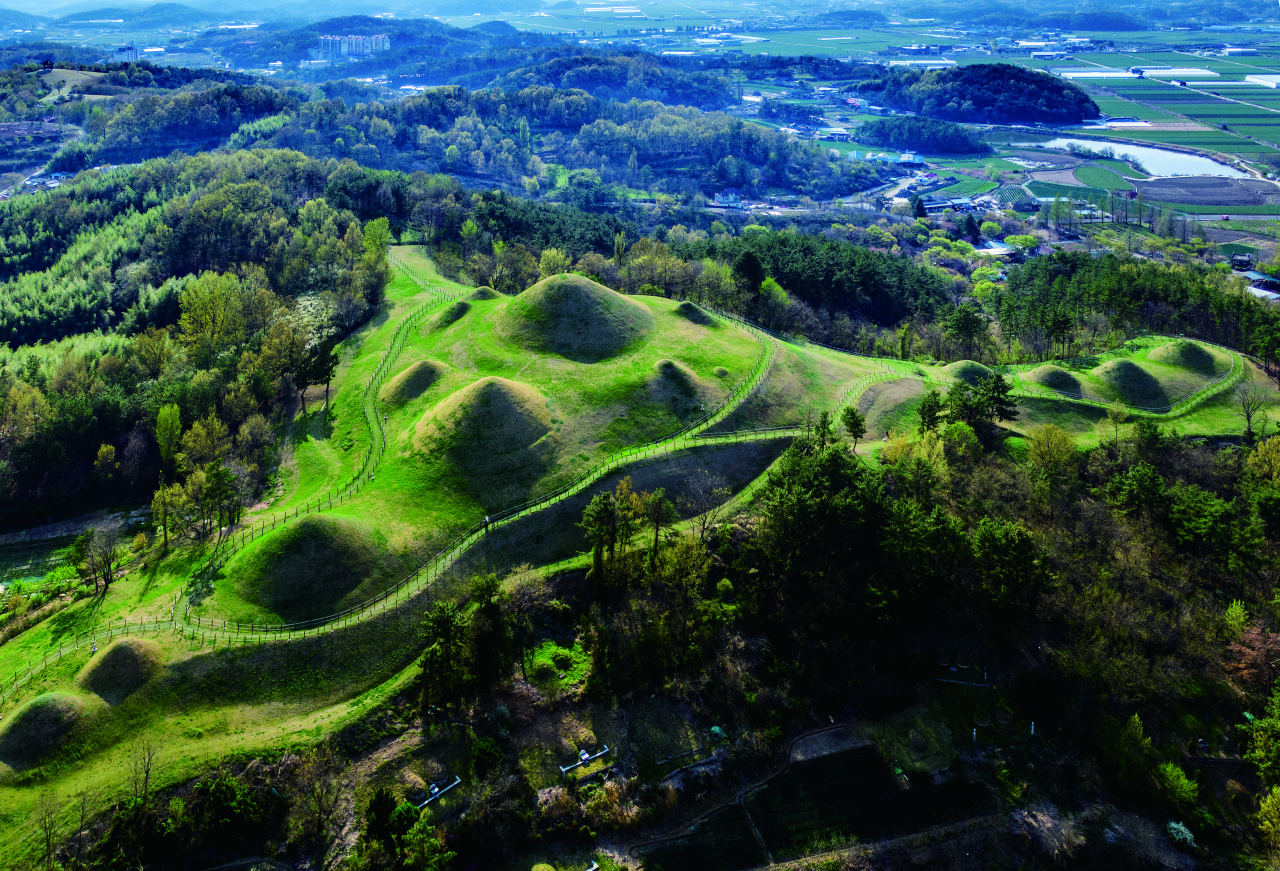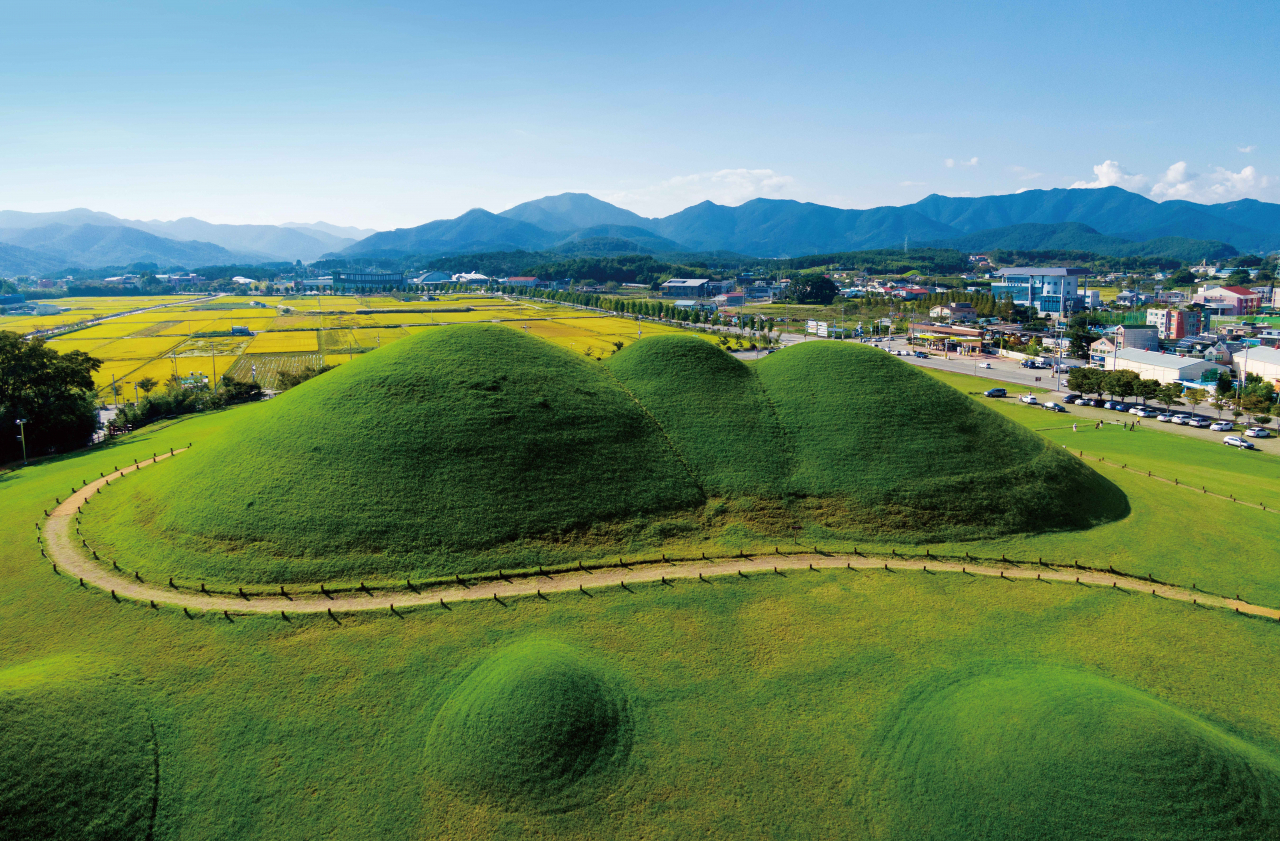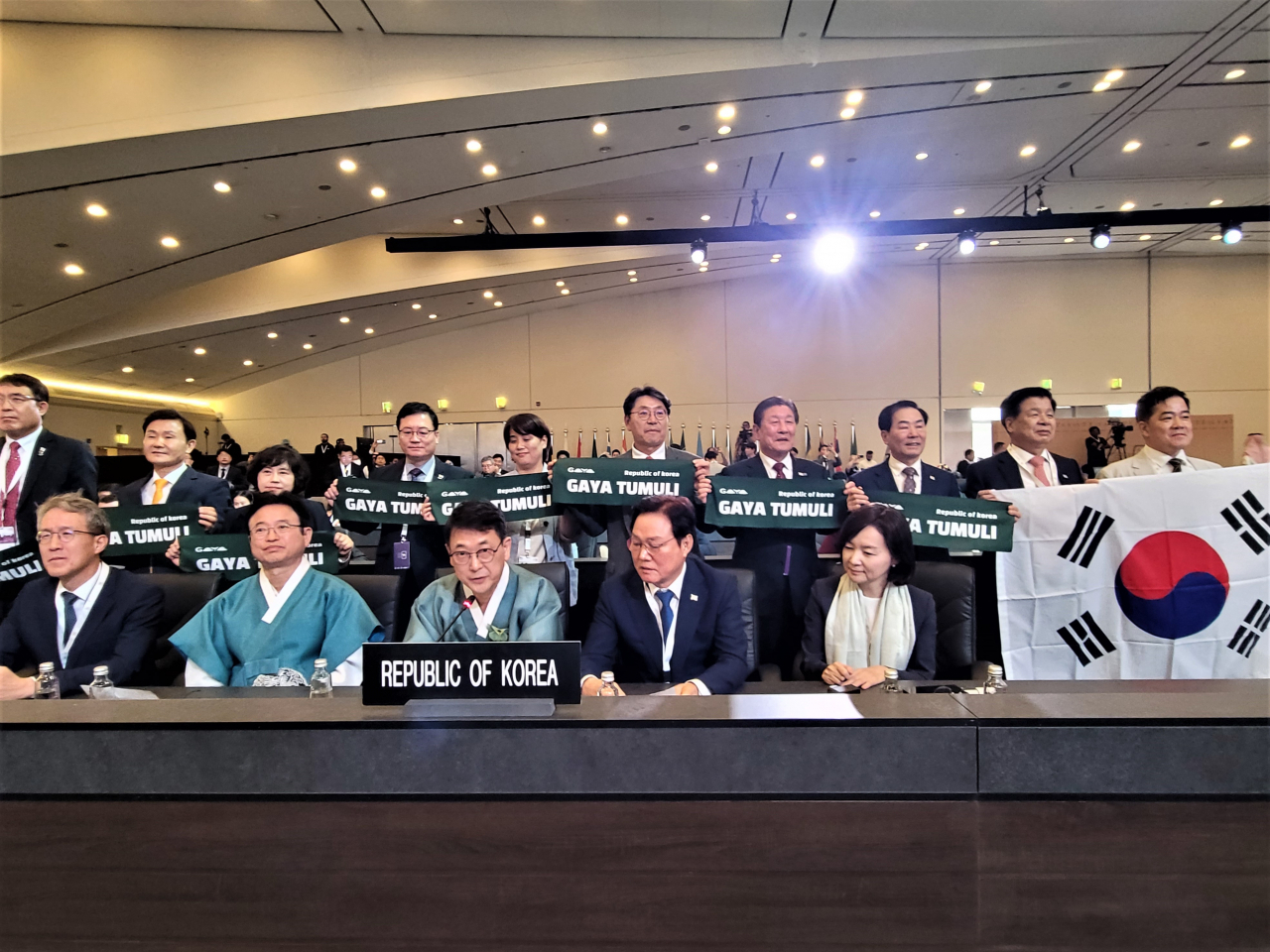Gaya Tumuli named UNESCO World Heritage
Gaya Tumuli the 16th World Heritage site in South Korea, following Korean tidal flats
By Kim Hae-yeonPublished : Sept. 17, 2023 - 21:38

The Gaya Tumuli, seven tomb clusters of Korea's ancient Gaya Kingdom (42-562), were inscribed on the UNESCO World Heritage List on Sunday.
The decision was made during the 45th session of the World Heritage Committee, which took place in Riyadh, Saudi Arabia. The session, which commenced on Sept. 10, decides on the inscription of 50 sites on the tentative list, and is set to conclude on Monday.
The seven tumuli clusters enlisted are: Gimhae Daeseong-dong Tumuli, Haman Marisan Tumuli, Changnyeong Gyo-dong and Songhyeon-dong Tumuli, Goseong Songhak-dong Tumuli, Hapcheon Okjeon Tumuli, all located in South Gyeongsang Province; Goryeong Jisan-dong Tumuli in North Gyeongsang Province; and Namwon Yugok-ri and Durak-ri Tumuli in North Jeolla Province.
The World Heritage Committee acknowledged the outstanding universal value of the Gaya Tumuli which not only represent archaeological evidence of the Gaya culture with its distinct political system of confederation, but also shows the diversity among ancient East Asian civilizations, according to the Cultural Heritage Administration.
With the listing of the Gaya Tumuli, South Korea has a total of 16 UNESCO World Heritage sites: 14 cultural heritage sites and two natural heritage sites. Getbol, Korean tidal flats, were inscribed in 2021 and Seowon, Korean neo-Confucian academies, in 2019.
The application for Gaya Tumuli was submitted to UNESCO in January 2021, during the former Moon Jae-in administration. In May this year, the International Council on Monuments and Sites, an advisory body to the World Heritage Committee, held an onsite review.
At the session, the ICOMOS confirmed that the conditions of integrity and authenticity of both "the whole series and of the individual component parts" have been met, and some recommendations have also been included in the draft decision in order to reduce the "vulnerability of the integrity" of some component parts.
"I would like to express my sincere gratitude to the World Heritage Committee for recognizing the the Gaya Tumuli's value as an important evidence of diversity within the ancient East Asian civilization." said Choi Eung-chon, head of the CHA. Choi added that the CHA will work closely with local governments to make sure that the heritage is taken care of carefully.


With the announcement of the inscription of Gaya Tumuli, the World Heritage Committee recommended that Korea persist in acquiring privately owned land parcels within the designated areas. The suggested effort aims to reduce the impact of intrusive elements in buffer zones and on the properties themselves. The committee also encouraged conducting public relations campaigns and actively engaging local communities in the decision-making process.
In response, the CHA affirmed its commitment to collaborate closely with local governments to preserve the Gaya Tumuli's value as a world heritage site.
However, the current Yoon Suk Yeol administration has excluded research and restoration of ancient Gaya from its government projects. This stands in contrast to the previous Kim Dae-jung and Moon Jae-in administrations that prioritized research and promotion of Gaya history.




















